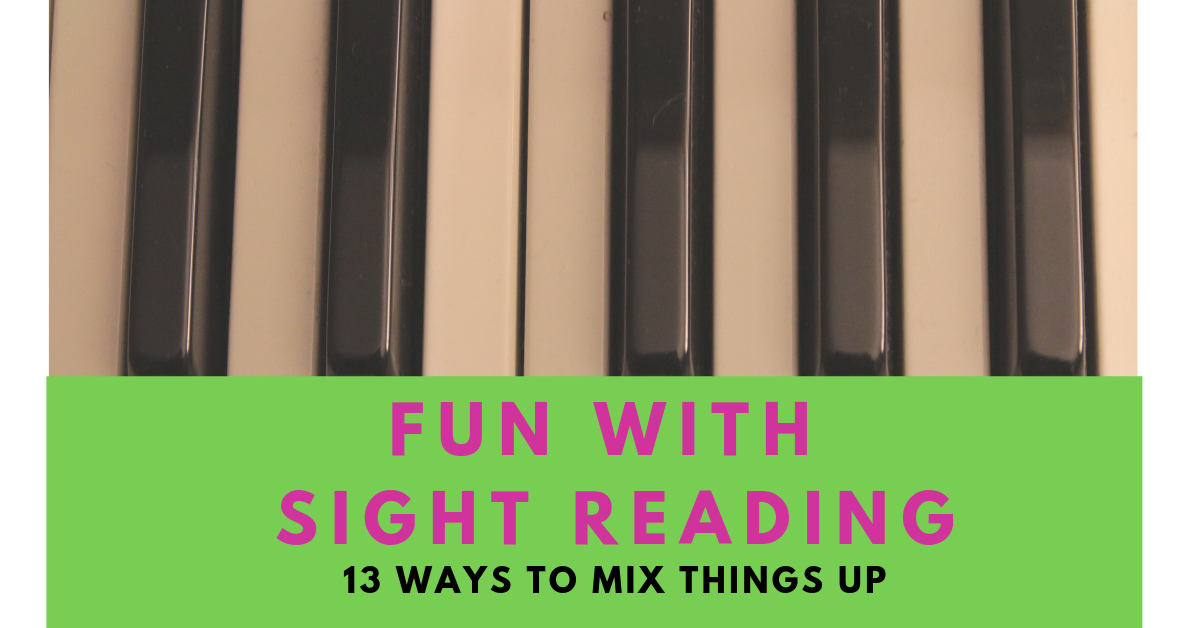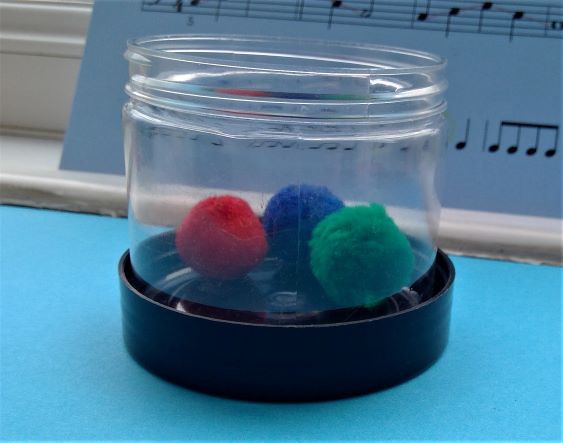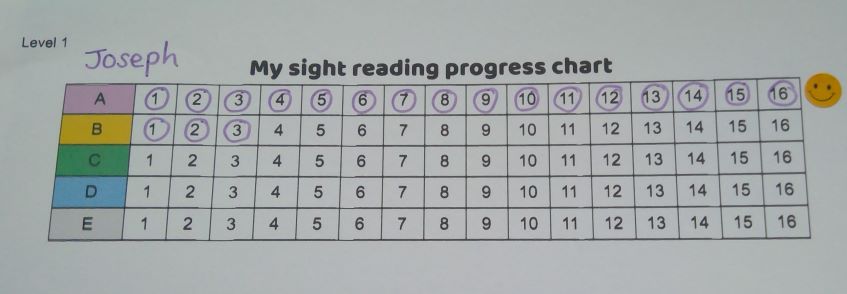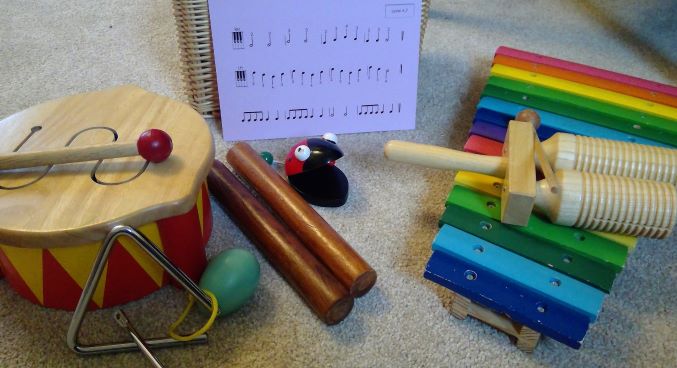
We need a toolbox of clever tricks to keep sight reading fresh and fun because there are no pictures or stories, yet each exercise needs to be played 3 times. Kids often want to play it just once and move on, but they will become much more confident readers with repetition. 3 is the magic number!
Here’s my sightreading toolbox. Try them out and let me know what you think!
(Note: I use Piano Safari sight reading cards, but these ideas could be adapted to work with any system/method).
- Use colour
For example we mark the right hand ones red, the left hand ones blue and the rhythm ones any colour you like. They can also mark the ‘sames’, 3rds and rests with particular colours- kids love to colour their exercises. Just be consistent. Tip – friction ink pens are great for this, as if they get carried away and make errors you can just rub them out.

2. Randomise!
Let them ‘choose’ the order. I have 3 pompoms in a little jar: red (for right hand exercise); blue (for left hand exercise) and green (for rhythm exercise) and pupils close their eyes and get one out to see what they will play first. They love the surprise! You could even ‘fish’ for them with little magnetic cards and a magnet fishing rod, to ramp up the fun factor!

3. Have them chart their own progress and reward milestones.
My pupils all have a sight reading log chart. They enjoy crossing off each one, seeing their progress and getting closer to that sweetie that they will earn when they have completed all 16 cards in a unit. You could let them draw a star or smiley face for each repetition directly on the card too.

4. Make the rhythms memorable
In the first few units of Piano Safari practise the animal rhythms first. Then see if they can spot the animal rhythms in their sight reading exercise. You can prompt with questions like ‘how many Charlie Chipmunks are there? Which bar is the Hippo in?’
5. Guess who?
Have a couple of exercises laid out and have them play one to you. You have to work out which they played. They will try hard to get it right!
6. Listen up!
Swap over and have them listen and work out what you played (it might help if you say the animal rhythms, or ta-tis etc as you play). This is great for their listening skills and memory.
7. Clapping is boring
Use different instruments or body percussion for the rhythm exercises, to mix it up. I use drums, triangles, claves, xylophones, castanets, shakers. You could use any household object e.g. pencils, wooden building blocks, pans, tubs etc.

8. Switch it up
Together, you could assign a different animal rhythm to a different instrument so they quickly switch between them. It encourages them to look ahead and see rhythm in blocks and patterns.
9. Take turns
Alternate bars or assign one animal rhythm pattern each- this is fun for them and encourages good listening and following the music. They will enjoy doing it with you as a team.
10. Make it different
Play at different speeds, volumes or octaves- you could also make up a story about what the animal rhythm is doing (e.g Charlie Chipmunk is hiding at the top of a tree- play quiet and high, Hippo is relaxing in the mud- loud and low)
11. Sing up!
Encourage them to sing while they play. This could be the animal rhythm words, finger numbers, key names, or even solfa (do-re-mi etc).
12. Stomp
Later, see if they can stamp or walk the beat whilst tapping the rhythm. A real challenge!
13. Feel the beat
Play with a metronome ticking, or a backing track for the rhythm exercises.
Do you have any ways that you make sightreading fun for your children or pupils? I’d love to hear more ideas to add to my toolbox!
